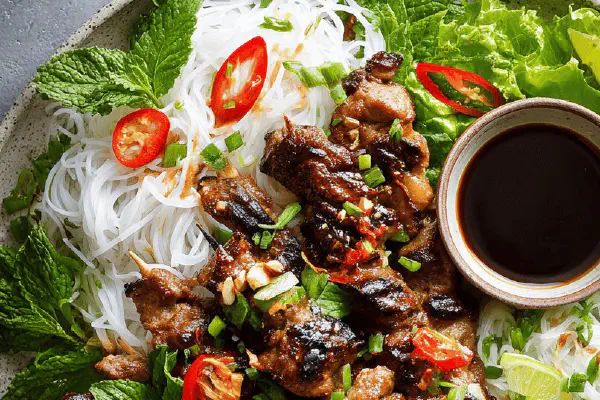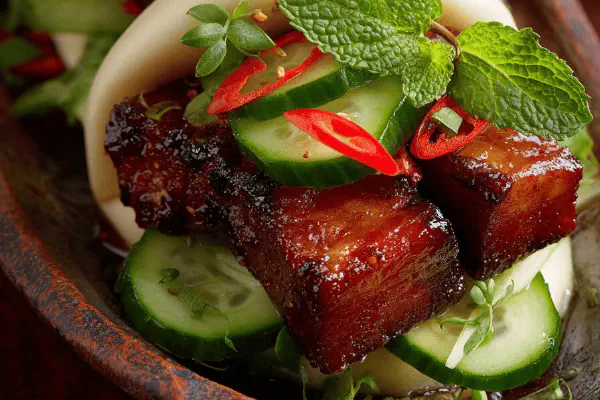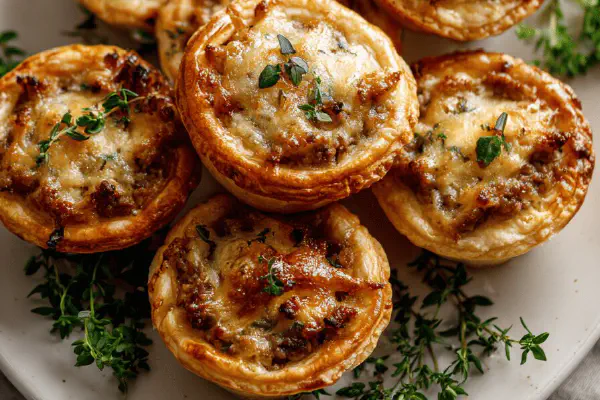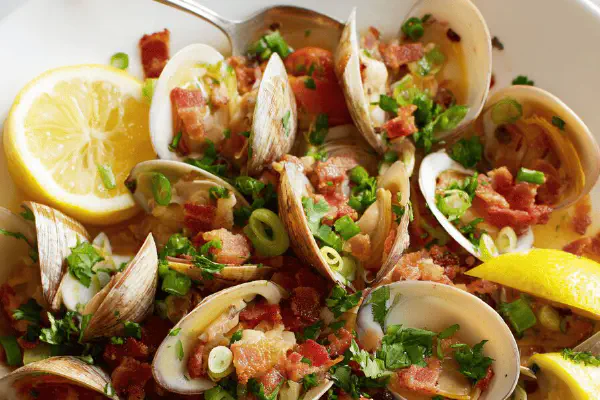Vietnamese Pork Rice Rolls
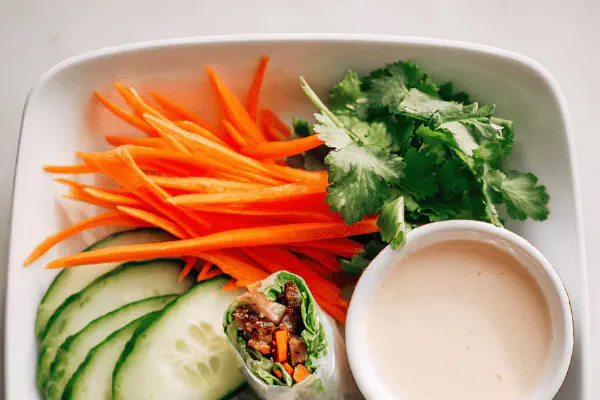
By Emma
Certified Culinary Professional
Ingredients
Vietnamese Pork
- 225 g (7.9 oz) lean ground pork (try ground turkey if low fat preferred)
- 2 scallions sliced thin
- 15 ml (1 tbsp) olive oil
- 7 ml (1.5 tsp) toasted sesame oil - reduced slightly from usual; avoids bitterness
- 12 ml (4 tsp) tamari or soy sauce - slight reduction keeps salt balanced
- 5 ml (1 tsp) chili garlic sauce (use sambal oelek or sriracha as substitute)
- 0.5 ml (⅛ tsp) Chinese five-spice powder - less to avoid overpowering pork
Garnish and Roll
- 8 rice paper sheets ~20 cm diameter (substitute with collard leaves for gluten-free alternative)
- 200 ml (⅘ cup) cooked rice vermicelli noodles
- 1 batch pickled carrots (see instructions)
- 1 Lebanese cucumber julienned
- 25 ml (1 ⅔ tbsp) fresh cilantro leaves
- 1 batch hoisin mayonnaise (see instructions) or plain mayo with hoisin and garlic mixed in
About the ingredients
Method
Prepare Pork
- Heat olive oil and sesame oil in a nonstick skillet until shimmering. Add pork in loose chunks; brown on medium-high heat without stirring too often — want irregular, chunky browning and slight crispiness in places. Toss in scallions halfway through. When a golden crust forms and pork turns opaque with juices evaporating, splash in soy sauce, chili garlic sauce, and sprinkle five-spice powder. Stir quickly to coat. Remove from heat before drying out. Taste and adjust seasoning – add a bit more chili sauce if you want heat, or a pinch of sugar if too sharp. Transfer to a bowl, cover, refrigerate minimum 25 minutes. Cold pork makes rolling easier, plus flavors meld better. Don’t skip chilling.
Pickle Carrots
- Julienne carrots finely. Toss with equal parts white vinegar and water, pinch salt, dash sugar, and crushed garlic clove. Let sit minimum 15 minutes while pork chills. The sharp tang cuts pork’s richness tightly.
Soften Rice Paper
- Use a large shallow dish with warm (not hot!) water. Quickly dunk one rice paper for 4 to 6 seconds — watch edges, they start transparent and soft but not floppy. Remove immediately to a flat surface (cutting board or damp tea towel). Repeat with each sheet. Too long and it tears; too short and it’s brittle and cracks. Learning the clap of the paper as it folds tells you it’s right — supple but taut.
Assemble Rolls
- Lay rice paper flat. Spoon 45 ml (3 tbsp) vermicelli onto center thirds. Layer 45 ml (3 tbsp) chilled pork over noodles, add pickled carrots and cucumber julienne, sprinkle cilantro leaves last. Fold short sides over filling first; then roll tightly from one long end to the other; keep tension so filling stays snug, no gaps. Rolls shrink slightly as they sit, so roll nicely tight but don’t rip.
Serve
- Serve immediately for best texture or wrap individually in plastic wrap, refrigerate up to 4 hours. Hoisin mayo complements. Can swap mayo dip for nuoc cham (fish sauce dip) or peanut sauce for variation. Rolls hold well chilled but rice paper firms up so come close to room temp before eating if stored.
Hoisin Mayonnaise
- Mix 3 parts mayo to 1 part hoisin, a dash of lime juice, and minced garlic. Adjust sweetness by adding a touch of honey or brown sugar if needed. Keeps creamy but pungent. Experiment with adding a little chili for heat.
Cooking tips
Chef's notes
- 💡 Brown pork in chunks; don’t stir constantly. Let crust form, hear sizzle, see golden spots before flipping. Irregular chucking keeps texture punchy. Use toasted sesame oil near end - it burns fast, flavors vanish if cooked too long with heat.
- 💡 Chilling pork is not just cooling; firmness helps rolling. Warm meat steams rice paper, turns gummy and heavy. Keep pork chunky, not minced fine. Adds chew contrast with soft vermicelli and crisp pickles. Good layering means mouthfeel clarity.
- 💡 Rice paper soak timing critical. Hot water ruins texture. Lukewarm, quick dunk 4-6 seconds max. Feel edges go translucent but center remains sturdy. Clap sound when folding guides softness. Too long soak = tears, floppy mess. Practice in batches.
- 💡 Pickled carrots must rest minimum 15 minutes, longer better. Sharp acidity cuts pork fat. Use crushed garlic and exact vinegar-water ratio; balance sweet and salt for punch. Flavor deepens with wait. Don’t skip this step or bites turn flat.
- 💡 Roll tight but gentle. Fold short edges in first or veggie escapes. Roll lengthwise with tension so filling stays put. Rolls shrink after chilling. If loose, press gently wrapped in plastic before serving. Avoid ripping; always keep extra rice paper ready.
Common questions
Why chill pork before rolling?
Helps rice paper stay firm. Warm pork steams wrap, turns soggy. Chilled pork firms up, flavors meld better. Rolling easier, less mess. Don't skip. Temperature matters more than you think.
Can I substitute ground turkey?
Yes but turkey dries fast. Cook gently, short time. Use olive oil slightly more. Keep pork spice proportions same but five-spice can be reduced. Texture differs - turkey finer, less fatty. Adds lean option.
How to avoid rice paper tears?
Short soak, lukewarm water key. Watch edges become flexible but not floppy. Clap sound as paper folds is guide. Too long soak = tears. Handle carefully when rolling. If torn, re-soak another sheet. Prep extras.
How to store rolls?
Individually wrap in plastic, fridge up to 4 hours. Rice paper firms refrigerated; bring rolls close to room temp before eating to regain chew. Avoid freezing. Prep pork early, assemble close to serving time. Moist towels keep rice paper pliable.
